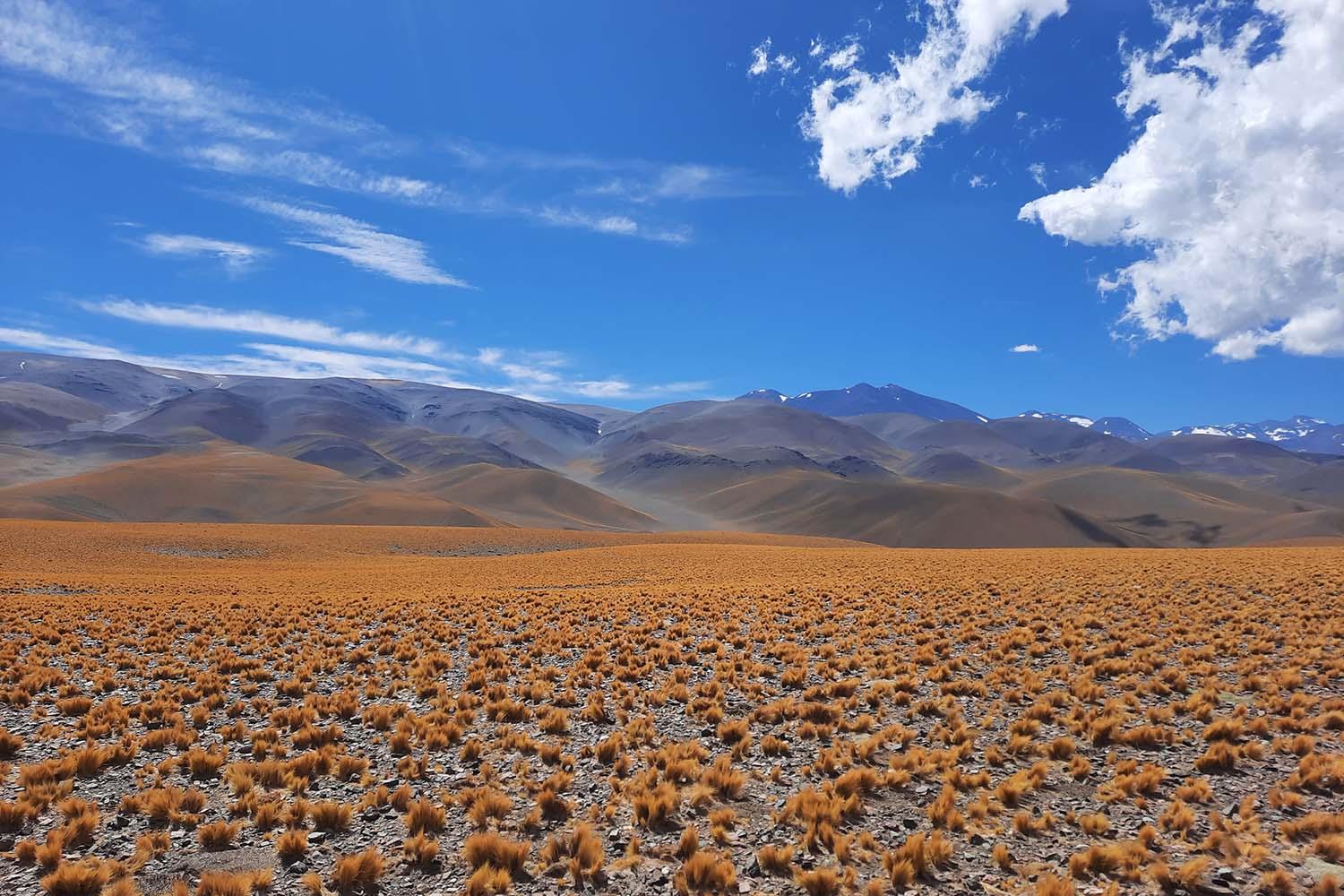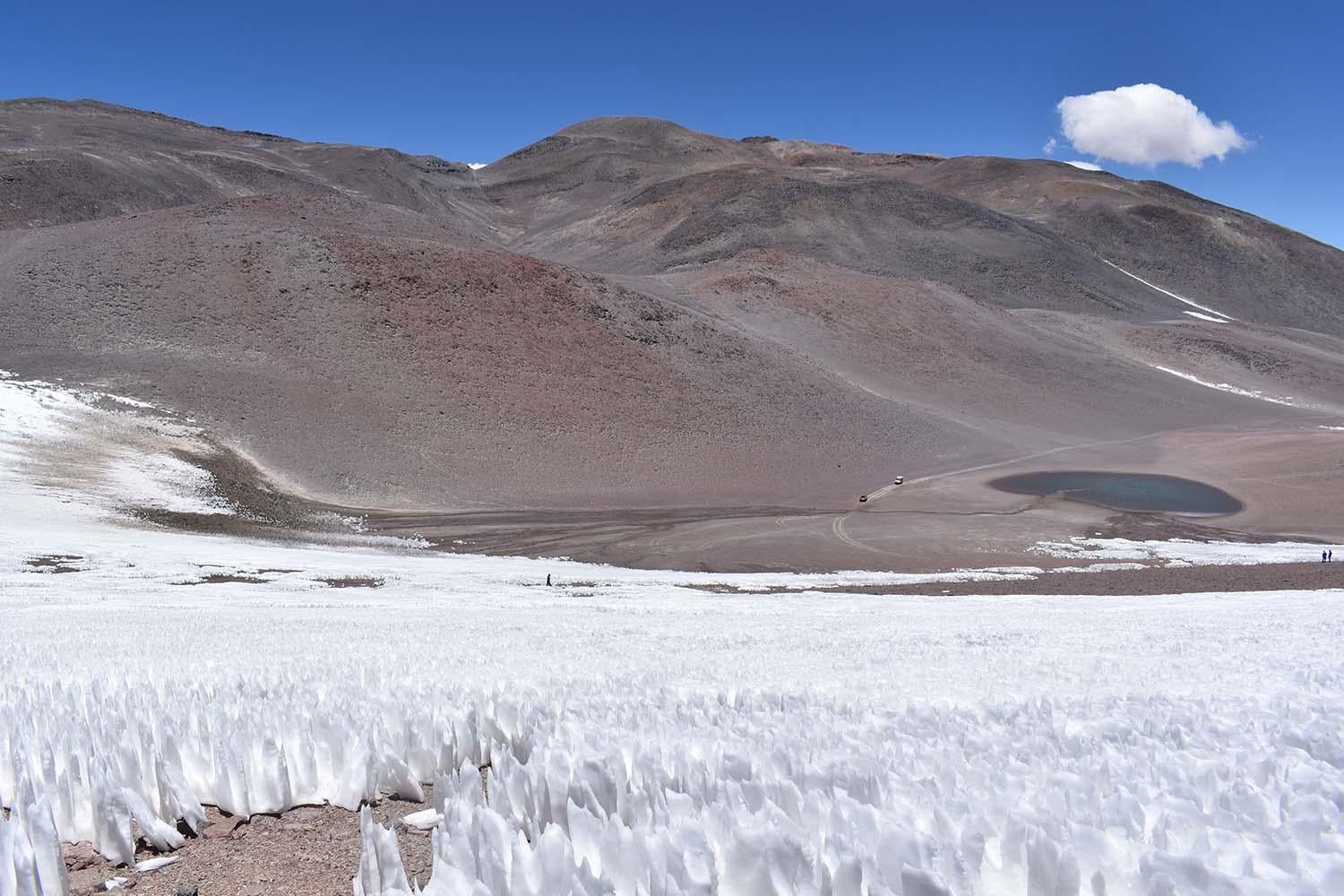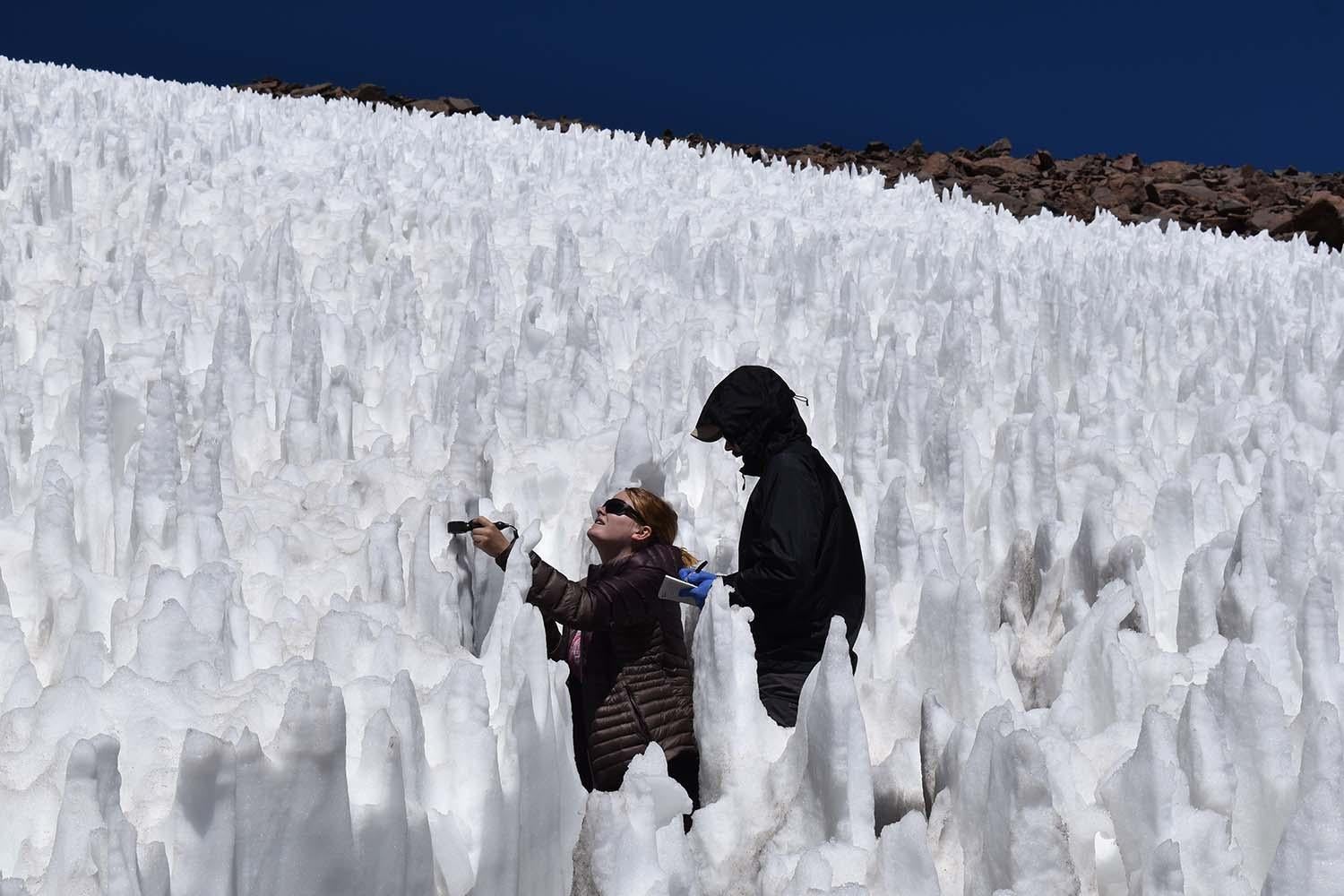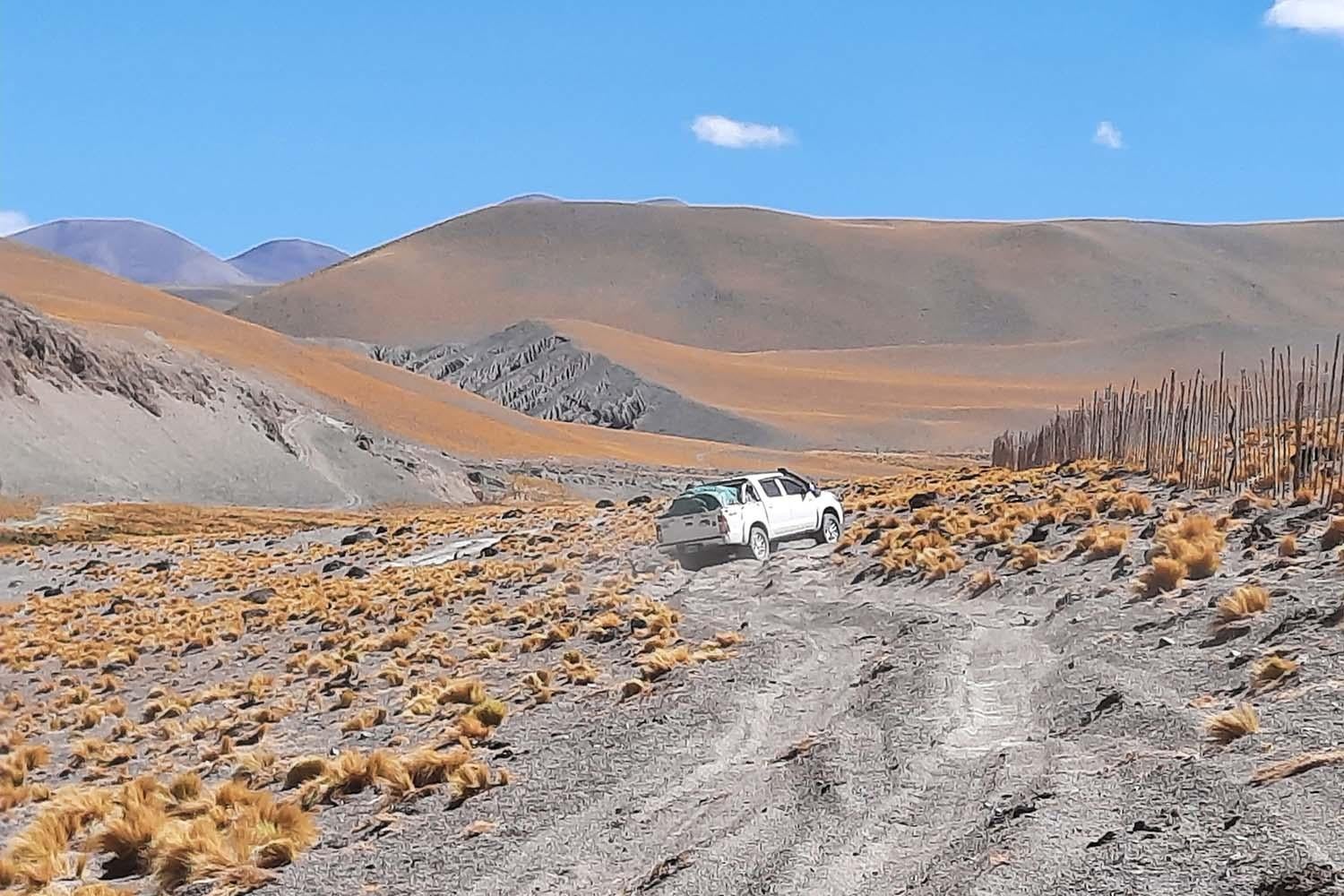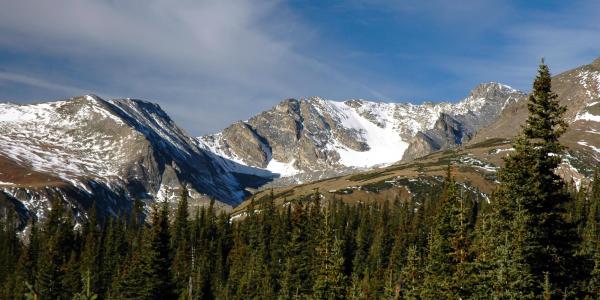In December 2021, a trio of CU scientists in a convoy of 4WD trucks sought to discover how life persists on Argentina and Chile’s Ojos del Salado, the world’s highest volcano and home to some of the planet’s driest areas. The team — Brian Hynek, geological sciences professor and LASP research associate, and graduate students Adam Solon (EBio’16; PhD’23) and Amanda Steckel (MAeroEngr’15; PhDGeol’24) — were the first researchers to explore and study some of the highest points on the Argentinian side of the mountain. Their work may inform future research into life beyond Earth, such as on Mars or on one of Jupiter’s moons, Europa.
Photos by Brain Hynek, Amanda Steckel and Christian Vitry






